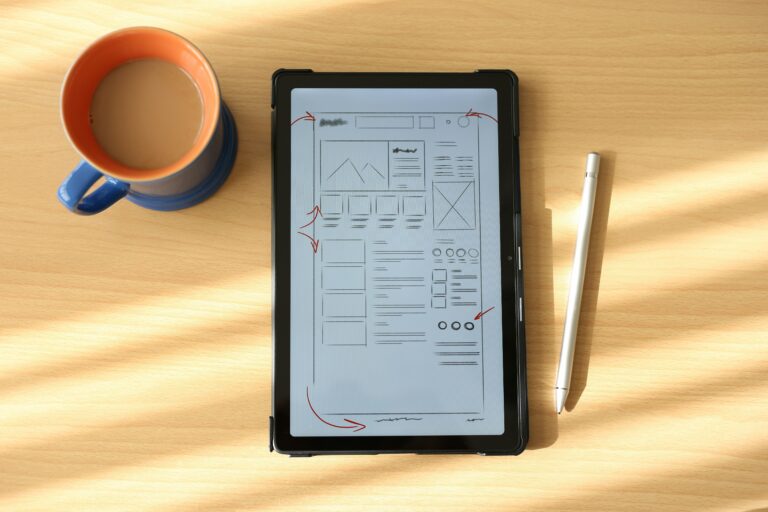Marketing Consultant
14 Jan, 2025
Product Design & UX salaries 2025
We’re Product Design & UX recruitment specialists offering up-to-date product salary information. This guide was last updated in January 2025.
Product Design salary 2025
Average salary £150,000
Average salary £150,000
Average salary £100,000
Average salary £70,000
UX salary 2025
Average salary £125,000
Average salary £110,000
Average salary £85,000
Average salary £65,000
Average salary £60,000
Average salary £55,000
UI salary 2025
Average salary £70,000
Average salary £55,000
Average salary £65,000
Why are Product Design & UX salaries high?
UX salaries in the UK are known to be relatively high due to several factors. Firstly, the demand for skilled UX Designers and professionals is significant in the UK market. As companies increasingly recognise the value of user-centred design and seamless digital experiences, they are willing to invest in top talent to ensure their products and services stand out.
Additionally, the UK has a robust and competitive digital industry, with many start-ups, tech companies, and design agencies competing for skilled UX professionals. This competition drives up salaries as companies strive to attract and retain top talent.
Additionally, the cost of living crisis in the UK, particularly in cities like London, is relatively high, leading to higher salary expectations. Finally, the specialised skill set required for UX design, which includes a deep understanding of user research, information architecture, interaction design, and visual design, contributes to the higher salaries commanded by UX professionals.
Product Design & UX benefits 2025
Statutory benefits
In the UK, employers are legally required to offer certain statutory benefits to their employees. These include:
- Statutory Sick Pay (SSP): Employers must pay SSP to eligible employees who are unable to work due to sickness or injury. The current rate of SSP is £116.75 per week (as of January 2025).
- Statutory Maternity Pay (SMP): Eligible female employees are entitled to up to 39 weeks of SMP, which is paid at 90% of their average weekly earnings for the first six weeks, followed by £184.03 per week or 90% of your average weekly earnings (whichever is lower) for the next 33 weeks (information correct as of January 2025).
- Statutory Paternity Pay (SPP): Eligible male employees are entitled to up to two weeks of SPP, which is paid at the same rate as SMP (£184.03 per week, or 90% of your average weekly earnings (whichever is lower) as of January 2025.
- Statutory Adoption Pay (SAP): Eligible employees who adopt a child are entitled to up to 39 weeks of SAP, which is paid at the same rate as SMP (£184.03 per week as of January 2025).
- National Minimum Wage (NMW): Employers must pay their employees at least the national minimum wage, which varies depending on the employee’s age and whether they are an apprentice. The current NMW rates (as of January 2025) are:
- £11.44 per hour for workers aged 21 and over
- £8.60 per hour for workers aged 18 to 20
- £6.40 per hour for workers aged under (but above compulsory school leaving age)
- £6.40 per hour for apprentices under 19
- £6.40 per hour for apprentices aged 19 and over, but in the first year of their apprenticeship
6. Pension auto-enrolment: Employers must automatically enrol eligible employees into a workplace pension scheme and make contributions on their behalf. The minimum contribution rates (as of January 2025) are:
- Employer minimum contribution: 3%
- Employee minimum contribution: 5%
- Government tax relief: 2%
Employers should also provide employees with a written statement of employment particulars, which outlines the terms and conditions of their employment, within two months of their start date.
Enhanced benefits
Good employers in the UK typically offer a range of enhanced benefits to their employees. Some of these benefits may include:
- Flexible working arrangements: Many employers offer flexible working arrangements such as remote working, job sharing, and flexible hours to help employees balance work and personal commitments.
- Paid time off: Most employers offer paid time off in addition to statutory requirements for holidays and sick days. Some also offer additional time off for volunteering.
- Healthcare benefits: Many employers provide healthcare benefits to their employees, such as private medical insurance, dental insurance, and vision insurance.
- Retirement benefits: Employers may offer enhanced pension contributions in addition to statutory requirements.
- Professional development opportunities: Good employers often provide opportunities for their employees to develop their skills and advance their careers, such as training courses, conferences, and mentoring programs.
- Employee assistance programs: These programs provide employees with confidential support and advice on a range of personal and work-related issues, including mental health, financial management, and legal concerns.
- Childcare support: Some employers offer childcare support, such as on-site childcare facilities or financial assistance with childcare costs.
- Wellness programs: Employers may offer wellness programs to promote employee health and wellbeing, such as fitness classes, gym memberships, or app subscriptions.
- Employee discounts: Some employers provide employee discounts on company products or services, as well as discounts with partner organisations.
Overall, good employers in the UK understand that their Product Design and UX employees are valuable assets and invest in their wellbeing, professional development and work-life balance.
Product Design & UX 2025 demand
Product Design and UX candidates are in high demand across various industries and business stages. Here are some areas where these roles are particularly sought after:
- Technology and software: The technology industry, including software development companies, start-ups, and tech giants, consistently seeks UX Designers. With the rapid pace of technological advancements, companies recognise the importance of delivering user-friendly and intuitive experiences to stay competitive.
- eCommerce and retail: In the age of online shopping, eCommerce companies heavily rely on product design and UX to optimise their websites and mobile apps, ensuring seamless navigation, intuitive product search, and streamlined checkout processes. Retailers also seek those in UX to enhance the user experience in physical stores, through interactive displays and touchpoints.
- Financial services: Banks, fintech companies, and insurance providers place a strong emphasis on user experience to differentiate themselves in a crowded market – design user-friendly banking apps, intuitive investment platforms, and seamless digital onboarding processes.
- Health and wellness: The healthcare industry is increasingly adopting digital solutions, from telemedicine platforms to health and fitness apps. Those in product design and UX play a crucial role in creating user-friendly interfaces that facilitate communication, access to medical information, and personalised health tracking.
- Media and entertainment: Streaming services, gaming companies, and digital content platforms rely on UX candidates to create engaging and immersive user experiences. These designers focus on optimising content discovery, enhancing user engagement, and creating intuitive interfaces for seamless consumption.
- Start-ups and early-stage companies: Start-ups and early-stage companies are often in need of UX Designers to shape their product experiences from the ground up. These designers help define the user journey, conduct user research, and iterate on the product’s user interface to ensure market fit and user satisfaction.
- Government and public services: Governments and public sector organisations recognize the importance of user-centric design in delivering efficient and accessible public services. Those in product design and UX are sought after to improve the user experience of government websites, digital portals, and public service applications.
- Education and EdTech: With the growing popularity of online learning platforms and educational technology, design and UX roles are in demand to create intuitive and engaging interfaces for students, teachers, and administrators. These designers focus on enhancing learning experiences and simplifying complex educational processes.
It’s important to note that UX designers are in demand across various product types, including websites, mobile applications, software interfaces, IoT devices, and even physical products with digital interfaces. The demand for design and roles can also vary depending on the geographic location, with tech hubs and major cities often having higher demand due to the concentration of technology companies and start-ups.
Further reading




